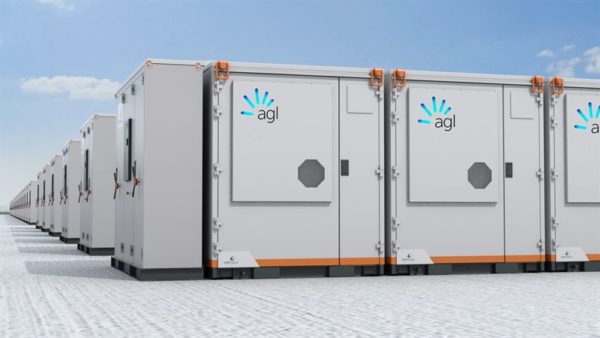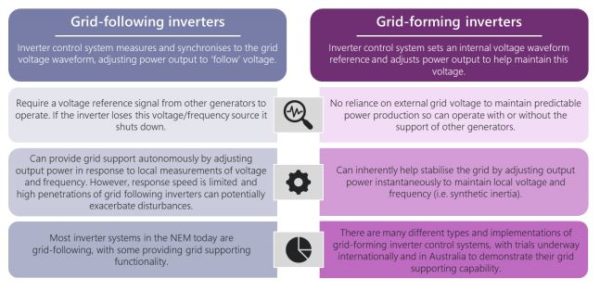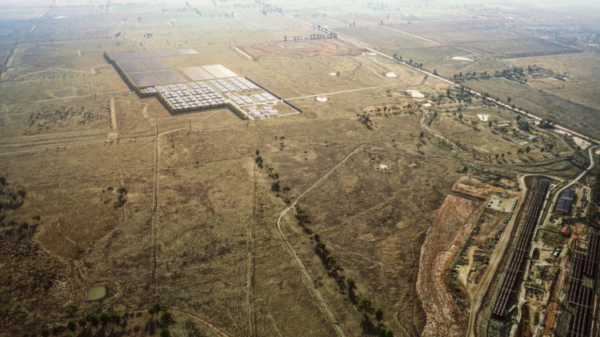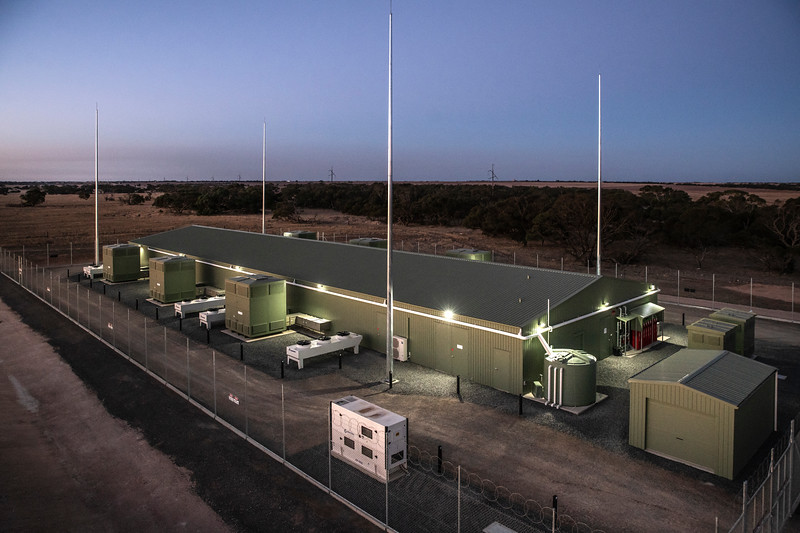The 250 MW/250 MWh battery, which will be delivered to AGL by Finnish technology company Wärtsilä, will be built at the site of AGL’s Torrens Island gas plant, just north of Adelaide in South Australia.
While the $180 million battery’s mammoth scale pales beside other proposals in the pipeline, the project will certainly be one of the most keenly observed undertakings both here and abroad for its deployment of grid-forming technology.
The largest planned grid-forming battery in the world, the Torrens Island project is expected to reveal much about the promising new technology’s capability. German-headquartered company SMA will supply over 100 inverters with grid-forming capabilities for the project, with Josh Birmingham, Director of Large-Scale & Project Solutions at SMA Australia, describing the project as “genuinely cutting edge on a global level.”
“[This] hasn’t been done before,” he told pv magazine Australia.

Wärtsilä Corporation
Grid-forming vs. grid-following
Traditionally inverters operate in what’s called grid-following mode, meaning their output synchronises to the grid’s voltage waveform. ‘Grid-forming’ inverters, however, set their own frequencies, making them capable of providing the grid with ‘virtual inertia.’
Also known as virtual synchronous generation, grid-forming technology was flagged by the Australian Energy Market Operator (AEMO) just last week as a top priority because of the crucial role the technology is expected to play in the clean energy transition. System strength services and inertia has historically only ever been provided by baseload coal and gas power plants with their reliable outputs, but grid-forming technologies could answer the increasingly desperate need for a clean substitute as the penetration of variable, renewable energy increases.

Image: AEMO
Responding to AEMO’s new target of getting the Australian grid to accommodate 100% renewable energy at any one time by 2025, Birmingham described grid-forming technology as “how we’re going to get there.”
The various levels of grid-forming tech
There are various levels of what grid-forming technology is capable of, Birmingham said. On the most basic level, if the main grid were to go down, a grid-forming system could continue supplying power to its local network. Unlike grid-following systems, it is able to form an islanded grid because it can generate its own frequency reference.
On a higher level, it can function as a “virtual synchronous machine,” meaning it can mimic the inertia services traditionally provided by spinning mass synchronous condensers, “pushing back” in the event of voltage fluctuations in the grid.
The ultimate level though is what’s known as ‘black start’ services. That means in the case of a system black event, the plant would be able to not only restart itself but potentially reenergise an area of the grid by rebooting other assets. This is seen as the pinnacle of what could potentially be offered by grid forming technology and would mark a significant technological advancement.
Getting to the bottom of what, in reality, is plausible will be something projects like the Torrens Island will demonstrate.
New tech, new regulations
The Torrens Island battery will initially operate in grid-following mode, before switching over to become grid-forming. This switch, Birmingham said, is largely because regulatory authorities and the market generally are still in the process of figuring out how to deal with grid-forming technologies. As it stands, market rules and how the services will be monetised remain unclear.
Given that the deployment of the technology is seen by the Operator as top priority, regulatory structures are expected to be expedited.
Syncline Energy, which on Tuesday released plans for the Melton Renewable Energy Hub, a 600 MW/2400 MWh battery storage project just west of Melbourne, has also flagged its plan to deploy grid-forming technologies. The company’s CEO, Phil Galloway, however said he’s waiting for more clarity around regulation before officially moving forward.

Syncline Energy Pty Ltd
It’s worth nothing on Tuesday, AEMO, in conjunction with the Victorian government, began seeking projects for the first stage development of Victoria’s western renewable energy zones. It specifically said the technologies it would consider include virtual synchronous machines and batteries with grid forming inverters, with projects to begin next year. In other words, clarification on rules around grid-forming services can probably be expected sooner rather than later.
‘First of many’
As Syncline Energy’s stance already makes evident, Birmingham’s expectation is that in next 12 months many more projects will propose deploying the technology. He described the Torrens Island battery as “the first of many” adding that in a year’s time its scale might not even be in the top five biggest plans.
The news of the grid-forming plans for Torren Island comes hot off the heals of South Australia transmission provider ElectraNet deploying two synchronous condensers in the state, with another two in the woodwork. The primary role of these spinning machines is also to provide system strength and inertia, an example of old tech being redeployed for the new world. In comparison to grid-forming inverters, though, the solution appears far less flexible and unable to offer multiple services. Eyes will certainly be on how the new high-tech inverters perform next to the old and trusted analogue solution.
The Torrens Island battery marks AGL’s first grid-scale storage project with construction set to begin later this year. The project currently includes just one hour of storage but is expected to scale up to four hours or 1000 MWh in future.
For the project, SMA will supply 109 Medium Voltage Power Stations (MVPS-SCS4200) to Wärtsilä. The complex system will also be supported by the GEMS Power Plant Controller and the energy management software from Wärtsilä.
This content is protected by copyright and may not be reused. If you want to cooperate with us and would like to reuse some of our content, please contact: editors@pv-magazine.com.









Grid forming DER will need more protocol control evolution to allow multiple black starts DERs to operate synchronously. What is thee suggested forum to ratify this enhanced control plane?
Grid forming DER will need more protocol control evolution to allow multiple black starts DERs to operate synchronously. What is the suggested forum to ratify this enhanced control plane for many grid-forming DERs?